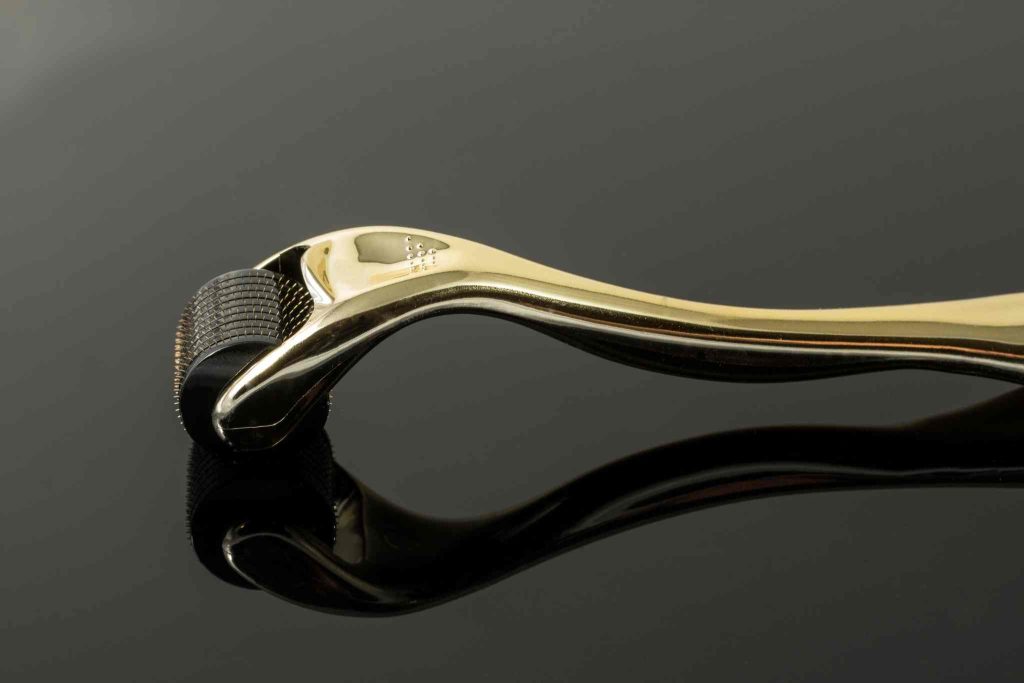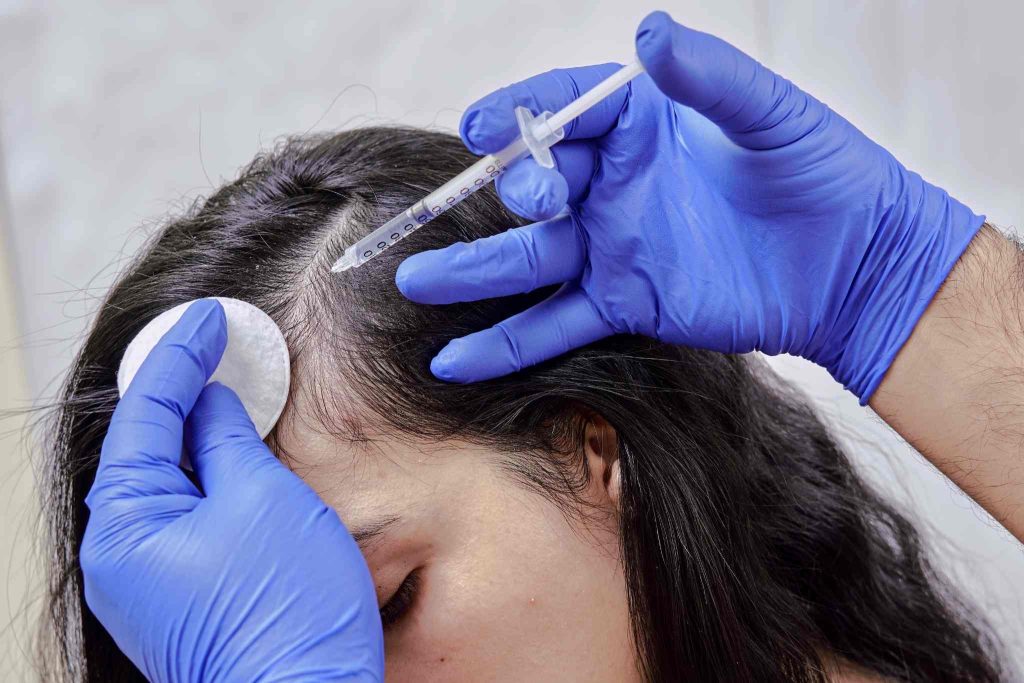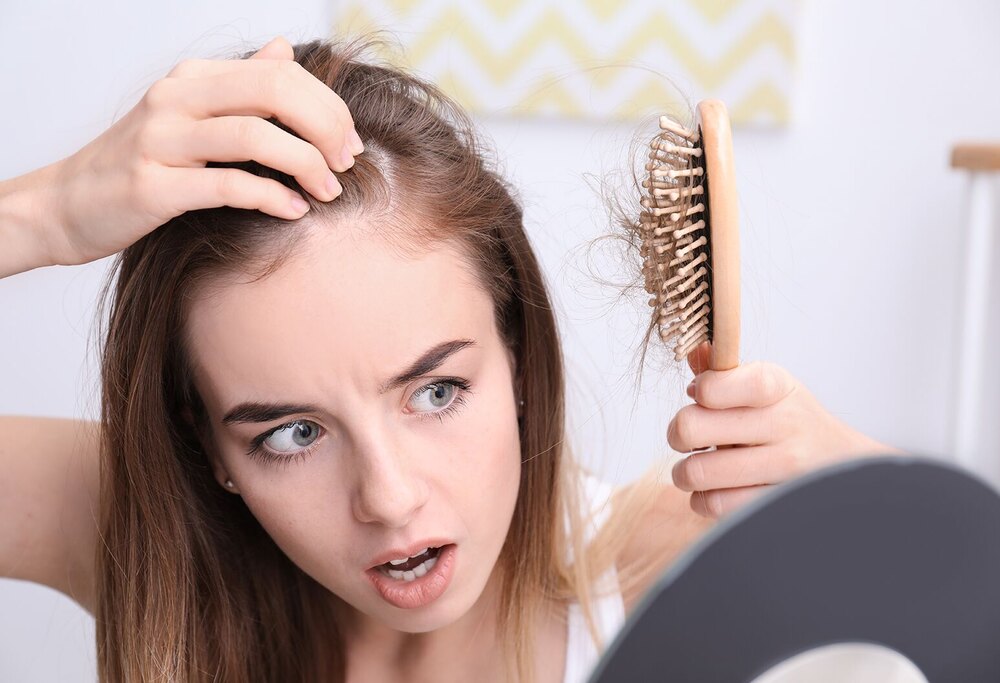
Hair loss affects millions of people, often causing frustration and a search for solutions beyond conventional shampoos or medications. One promising approach gaining attention is microneedling scalp treatments. This technique involves using fine needles to create micro-injuries on the scalp, triggering a healing response that can revitalize hair follicles. But an essential question remains: how often to microneedle scalp to achieve real results?
Understanding scalp microneedling-from its mechanism to ideal schedules-can help those struggling with hair thinning make informed, confident decisions
Table of Contents
How Microneedling Works for Hair Loss
5 Major Types of Hair Loss Conditions
How Often to Microneedle Scalp by Needle Length
Key Guidelines for All Needle Sizes
4 Most Common Microneedling and Hair Growth Products
How to Choose the Right Professional for Long-Term Planning
Hair Loss Won’t Wait-Neither Should You!
| Key Takeaways
✔ Needle lengths of 0.25mm to 0.5mm can be used 2-3 times per week to improve absorption of hair growth products without reaching deeper tissue. ✔ Using 1.0mm needles once every 7-10 days allows for deeper follicle stimulation while giving the scalp time to heal. ✔ Needles that are 1.5mm or longer should only be used every 3-4 weeks under professional supervision to avoid damage or complications. ✔ Regardless of needle size, maintaining a consistent schedule and allowing for proper recovery is essential to avoid irritation and support effective hair regrowth. |

How Microneedling Works for Hair Loss
Microneedling scalp treatments work on a simple but powerful biological principle: controlled injury leads to tissue repair. When the skin is punctured with hundreds of tiny needles, the body activates wound healing, increasing collagen production and encouraging better blood flow to the scalp.
These effects are particularly beneficial for hair growth because they improve nutrient delivery to hair follicles and may help awaken dormant ones. More importantly, microneedling scalp for hair growth enhances the scalp’s ability to absorb topical products like minoxidil or peptide serums, often multiplying their effectiveness. As an emerging method of transdermal drug delivery, microneedling has been increasingly used to treat alopecia and has demonstrated proven effectiveness.
5 Major Types of Hair Loss Conditions
Before deciding how often to microneedle scalp, it’s essential to identify the specific type of hair loss being addressed. Scalp microneedling isn’t a one-size-fits-all treatment-some conditions respond well, while others may need more cautious or customized approaches.
Accurately identifying the root cause of hair loss is essential. It determines whether microneedling is suitable, how frequently it should be done, and what accompanying treatments should be included. Here are the most common hair loss types and how they relate to microneedling scalp for hair growth:
1. Androgenetic Alopecia (Male or Female Pattern Baldness)
- Cause: Genetic and hormonal (typically driven by DHT).
- Pattern: Gradual thinning, starting at the crown or hairline in men, diffuse thinning in women.
- Microneedling Response: Highly responsive. This condition has shown the best clinical response to microneedling for scalp treatments when combined with topicals like minoxidil.
- Frequency Tip: Moderate needle lengths (0.5mm to 1.0mm) used consistently yield promising results.
2. Telogen Effluvium
- Cause: Triggered by stress, illness, surgery, or major life events.
- Pattern: Sudden, diffuse shedding across the scalp.
- Microneedling Response: Use with caution. Since the follicles are not permanently damaged, the focus should be on addressing the root cause first.
- Frequency Tip: Avoid aggressive microneedling. Once shedding stabilizes, gentle protocols with short needles may help speed up recovery.
4. Alopecia Areata
- Cause: Autoimmune disorder where the immune system attacks hair follicles.
- Pattern: Distinct bald patches; may be temporary or recurring.
- Microneedling Response: Variable. Some clinical studies suggest microneedling can stimulate regrowth, especially when paired with corticosteroids or PRP, but results vary by individual.
- Frequency Tip: Only under medical supervision. The immune involvement makes the response less predictable.
5. Traction Alopecia
- Cause: Chronic pulling from tight hairstyles (braids, ponytails, extensions).
- Pattern: Localized thinning or bald spots, often around the edges or temples.
- Microneedling Response: Conditionally beneficial. If follicles are still viable, gentle microneedling may help revive them.
- Frequency Tip: Start conservatively. Focus on scalp healing first before beginning an aggressive microneedling routine.
Other Considerations
- Scarring Alopecias: Forms like lichen planopilaris or frontal fibrosing alopecia involve permanent follicle destruction. These conditions are not suitable for standard microneedling scalp for hair growth protocols.
- Postpartum Hair Loss: Often resolves on its own. Mild microneedling can be helpful, but should only be started after hormone levels stabilize.
- Nutritional Deficiencies: Iron, zinc, and vitamin D imbalances can cause diffuse thinning. In these cases, microneedling may offer limited benefits unless the deficiency is corrected first.
How Often to Microneedle Scalp by Needle Length
Determining how often to microneedle scalp depends heavily on the length of the needles used. Different needle lengths affect the depth of penetration, healing time, and the treatment’s intended purpose, ranging from superficial product absorption to deep follicle stimulation.
Here’s a breakdown of common needle sizes, their benefits, risks, and recommended frequency:
0.25mm to 0.5mm Needles
These needles are best for maintaining scalp health and supporting active ingredients, not necessarily for initiating new hair growth alone.
- Purpose: Enhances absorption of topical treatments like minoxidil or peptides.
- Depth: Targets the outermost layer of the scalp (epidermis).
- Frequency: Safe to use 2-3 times per week.
- Use Case: Ideal for beginners and home users focusing on serum delivery rather than deep follicle stimulation.
- Healing Time: Minimal-often no visible redness or discomfort post-use.
1.0mm Needles
At this length, spacing out sessions is critical. Too frequent use may stress the skin and hinder recovery, negatively impacting results.
- Purpose: Stimulates deeper tissue repair, collagen production, and follicle activity.
- Depth: Reaches the dermis where hair follicles and blood vessels are located.
- Frequency: Recommended once every 7-10 days to allow full healing.
- Use Case: Suitable for individuals experiencing moderate hair thinning or early-stage androgenetic alopecia.
- Healing Time: Moderate-may cause redness, tenderness, or slight scabbing for 1-2 days.
1.5mm or Longer Needles
Using long needles without medical oversight increases the risk of skin trauma, infection, and permanent scarring. They should never be used in DIY regimens.
- Purpose: Intended for maximum dermal stimulation, targeting severe hair loss or stubborn bald patches.
- Depth: Penetrates deep into the dermis, possibly reaching the subcutaneous layer.
- Frequency: Should only be used every 3-4 weeks, and only under professional supervision.
- Use Case: Reserved for clinical environments and advanced treatment protocols.
- Healing Time: Extended-redness, pinpoint bleeding, and swelling can last several days.
Key Guidelines for All Needle Sizes
Microneedling for the scalp should always be a balance between stimulation and recovery. More is not better-precision and patience are what drive long-term hair restoration.
- Avoid Overuse: Regardless of size, microneedling too frequently can damage skin and worsen hair loss.
- Track Reactions: Pay attention to signs of inflammation, sensitivity, or delayed healing. These are signals to reduce frequency or adjust the needle length.
- Sanitize Tools: Always disinfect devices before and after use to prevent infection, especially for at-home treatments.
- Stay Consistent: Adherence to the right schedule is more important than trying to rush results with aggressive use.
4 Most Common Microneedling and Hair Growth Products
While scalp microneedling can stimulate hair follicles on its own, its impact is greatly amplified when combined with proven topical products. The micro-channels created by the needles act as open pathways, allowing these active ingredients to reach deeper skin layers where hair follicles reside.
To maximize results, it’s essential to choose the right products and apply them at the correct time.
1. Minoxidil (Rogaine)
Best suited for individuals with androgenetic alopecia. Consistency is critical for long-term improvement.
- Purpose: FDA-approved vasodilator that prolongs the anagen (growth) phase of hair follicles.
- How It Helps: Enhances blood circulation and follicular activity, making it highly effective when paired with microneedling scalp for hair growth. After 12 weeks of treatment, patients who received both microneedling and minoxidil experienced substantially greater hair regrowth compared to those using minoxidil alone.
- Application Tip: Wait 12 to 24 hours post-treatment before applying to minimize irritation and inflammation.
2. Peptide-Based Serums
These products are typically soothing and reduce post-needling redness while enhancing results.
- Purpose: Contain growth factors, amino acids, and proteins that nourish and repair the scalp.
- How They Help: Promote cellular communication and stimulate follicle regeneration-ideal for use immediately after microneedling for the scalp.
- Application Tip: Apply immediately post-session to take advantage of open skin channels.
3. Caffeine-Infused Treatments
While not as strong as minoxidil, caffeine-based products are a gentler addition for daily support
- Purpose: DHT-blocking properties help prevent hormone-related hair loss.
- How They Help: Stimulate follicle health and may counteract miniaturization caused by DHT in cases of pattern baldness.
- Application Tip: Use routinely, ideally between microneedling sessions rather than immediately after.
4. Niacinamide and Panthenol Formulas
Great for sensitive users or those new to microneedling.
- Purpose: Support skin barrier repair and improve scalp hydration.
- How They Help: Calm irritation and speed up recovery from microneedling scalp treatments.
- Application Tip: Use within 24-48 hours post-needling, especially if redness or dryness persists.
Important Usage Guidelines
- Follow the Right Sequence: Avoid layering too many actives immediately after microneedling. Choose one or two compatible products based on skin tolerance.
- Avoid Alcohol-Based Solutions Post-Treatment: These can cause burning or excessive dryness on freshly needled skin.
- Don’t Skip Sessions: Sporadic use of topicals disrupts progress. Products should be applied regularly between sessions based on their respective schedules.
- Consider Product pH and Sterility: Use formulations designed specifically for post-needling to reduce the risk of infection or adverse reactions.
When to Expect Results
Understanding how often to microneedle scalp lays the groundwork, but realistic expectations about the timeline are just as important. Hair regrowth doesn’t happen overnight. It’s a gradual biological process influenced by multiple factors, including age, overall health, hormone balance, and treatment adherence.
Here’s what users can typically expect:
Weeks 4 to 6
- Reduced Shedding: Initial signs of decreased hair fall may be observed.
- Scalp Improvement: The skin on the scalp may look healthier, less flaking, more balanced oil production.
- Early Scalp Response: Mild redness or sensitivity after treatments usually subsides quicker by this point, showing improved scalp tolerance.
Months 2 to 3
- Baby Hair Emergence: Fine, soft hairs may begin to sprout in thinning areas.
- Visible Density in Certain Zones: The hairline or crown may appear slightly fuller under close inspection.
- Increased Scalp Circulation: Some people notice improved scalp warmth or tingling after sessions, suggesting better blood flow.
Months 4 to 6
This phase is where microneedling scalp for hair growth becomes visibly rewarding. Photos taken at baseline can help highlight progress that may not be obvious day-to-day.
- Thicker Hair Strands: New hair begins to mature, leading to stronger and darker strands.
- Improved Hair Texture: Previously wispy or limp hair may feel more robust and manageable.
- Enhanced Coverage: Thinning spots may begin to blend more naturally with surrounding hair.
Months 6 to 12
- Sustained Regrowth: Full benefits typically manifest in this window, especially with consistent application.
- Slowed Hair Loss: For many, hair shedding stabilizes or returns to a healthy baseline.
- Plateau Phase: Around month 9 or later, progress may slow, indicating it’s time to reassess frequency or integrate supportive treatments.
Additional Considerations
- Consistency is Critical: Results depend more on regularity than intensity. Missing sessions or switching tools too often can undermine progress.
- Complementary Therapies:
- PRP (Platelet-Rich Plasma) can accelerate outcomes when paired with microneedling.
- Low-Level Laser Therapy (LLLT) helps improve follicular energy levels.
- Topical Minoxidil or Peptides enhance absorption through micro-channels.
- Always introduce add-ons under medical supervision to avoid interaction or scalp overload.
- Progress Tracking:
- Use monthly photographs in consistent lighting.
- Maintain a journal to document needle sizes, session dates, and topical products.
- Consider apps designed for hair growth tracking to visualize trends over time.
How to Choose the Right Professional for Long-Term Planning
Although at-home microneedling scalp kits offer convenience, partnering with a qualified professional ensures the treatment is safe, personalized, and optimized for long-term success. Not everyone will respond the same way to microneedling for scalp, which is why expert supervision is often the difference between minimal results and significant hair regrowth.
Here’s how to identify the right professional and what to expect from guided care:
What a Qualified Professional Will Do
- Diagnose the Specific Hair Loss Condition: Uses tools like dermoscopy or scalp biopsies for accurate identification. Avoids trial-and-error approaches common with self-treatment.
- Recommend the Right Protocol: Determines ideal needle length, session frequency, and treatment depth. Adjusts the plan based on progress and scalp sensitivity.
- Oversee Treatment Progress: Monitors inflammation, healing response, and hair density. Prevents overuse, which can lead to irritation or reduced effectiveness.
- Introduce Advanced Therapies: May include PRP (platelet-rich plasma), topical finasteride, or low-level laser therapy. Applies medical-grade growth factors or peptides that outperform over-the-counter products.
- Offer Clinical-Grade Microneedling: Utilizes professional equipment with greater precision. Includes numbing agents for deeper needle penetration with minimal discomfort. Ensures sterile technique and high safety standards.
How to Vet a Professional
- Check Credentials: Look for board certification (for dermatologists) or accreditation from reputable trichology institutions.
- Request Before/After Results: Ask to see patient outcomes from similar hair loss cases.
- Read Reviews or Testimonials: Look for feedback that reflects consistency, professionalism, and results.
- Assess Comfort and Transparency: A good provider explains procedures, answers questions, and sets realistic expectations.
Why Professional Guidance Matters
- Customized Plans: Avoids generic approaches by tailoring frequency and tools to the patient’s specific scalp and hair type.
- Avoids Common Pitfalls: Reduces the risk of overtreatment, infection, or using incompatible products.
- Improves Long-Term Retention: Many users abandon their microneedling scalp journey due to lack of support or visible progress-professional oversight can prevent this.
Frequently Asked Questions
The frequency depends on the needle length. Shorter needles (0.25mm–0.5mm) can be used 2–3 times per week, while 1.0mm needles should be used once every 7–10 days. Longer needles (1.5 mm+) require 3–4 weeks between sessions and should be used under professional supervision.
Healing time varies by needle depth. Shorter needles usually heal within 24 hours, while longer needles may cause redness or tenderness for 2–5 days. Always allow full recovery before the next session to prevent irritation or damage.
Microneedling alone can stimulate some hair regrowth by boosting collagen and blood flow. However, results are typically better when combined with topicals like minoxidil or peptides. For significant improvement, consistency and a well-rounded approach are key.
Peptide serums and growth factor treatments are ideal immediately after microneedling. Avoid harsh or alcohol-based products for at least 24 hours. Wait 12–24 hours before applying minoxidil to reduce the risk of irritation.
Initial signs like reduced shedding may appear in 4–6 weeks. Noticeable regrowth, including thicker strands and baby hairs, often begins around 2–3 months. Full results typically take 6–12 months with consistent use.

Hair Loss Won’t Wait—Neither Should You!
Ready to take control of your hair loss and see real results? Whether you’re just starting or looking to improve your current routine, BioRestore in Connecticut offers expert-guided microneedling scalp treatments tailored to your unique needs. With advanced technology and experienced professionals, BioRestore helps Connecticut residents achieve fuller, healthier hair through safe, effective solutions.
Don’t navigate the hair regrowth process alone—let BioRestore in Connecticut guide you with personalized care, clinical-grade tools, and proven therapies. We proudly serve clients who are serious about restoring confidence and results.
Schedule your consultation with BioRestore in Connecticut today and unlock your scalp’s full potential!